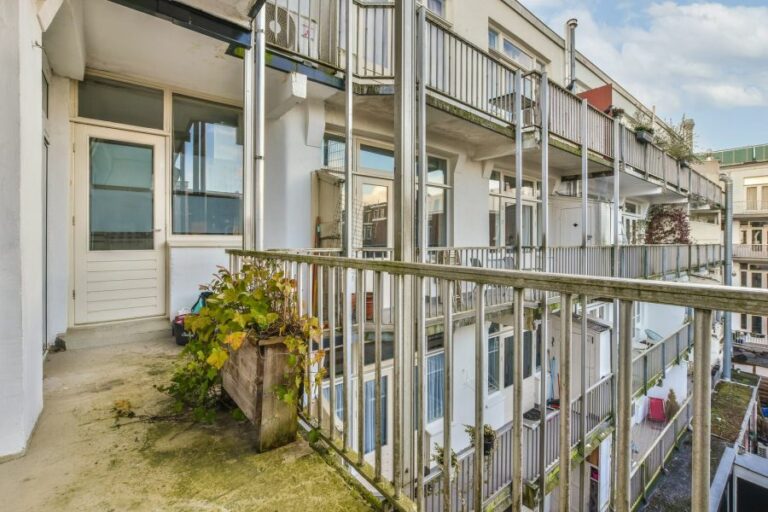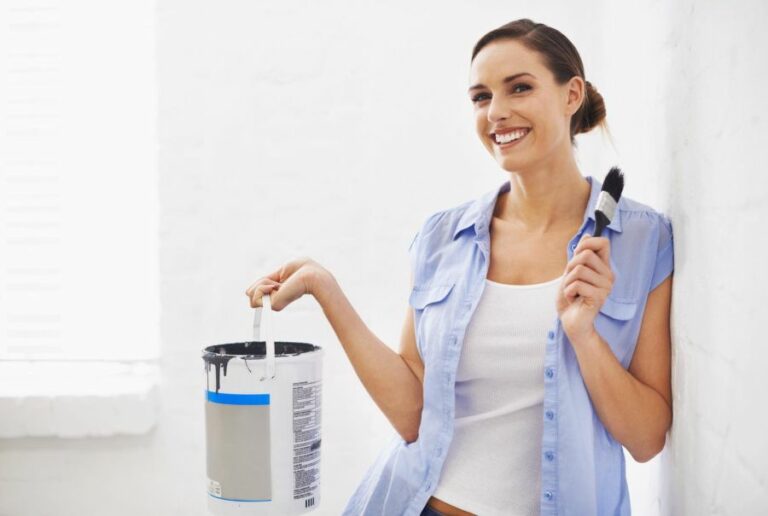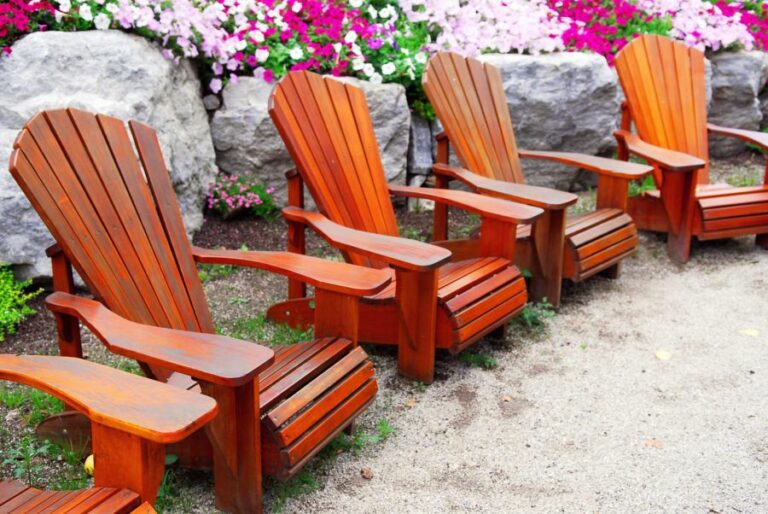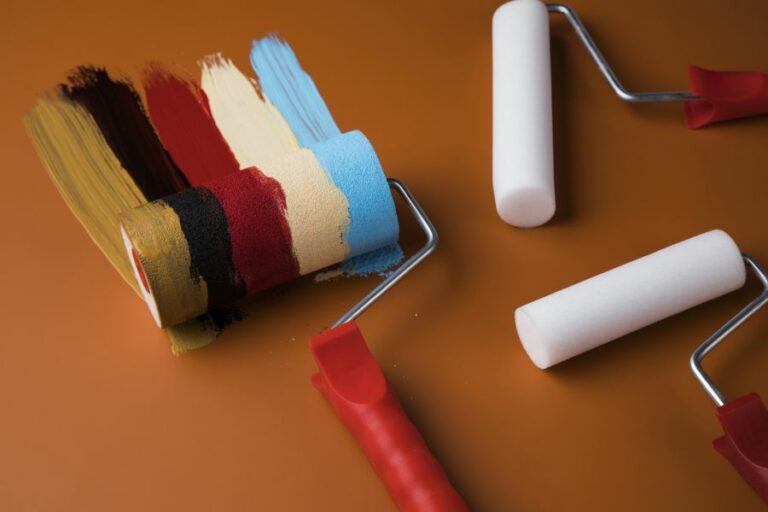The Ultimate Guide to Choosing the Best Outdoor Cement Paint
Transform your dull, drab concrete into a vibrant, attractive surface with outdoor cement paint! Our latest blog post takes you through the various benefits of sprucing up your exteriors and how to choose the perfect paint for your project. Say goodbye to lifeless cement pavements, patios, or walls, and welcome a remarkable makeover with brilliant color and enhanced durability.
Get ready to tackle what once seemed impossible and turn your outdoor spaces into irresistible charming spots. Learn valuable information, techniques, and insider tips on outdoor cement paint. Time to get creative!
Outdoor cement paint:
Outdoor cement paint is durable, water-resistant, and mold-resistant for exterior surfaces such as walls, fences, and patios. Proper surface preparation and following the manufacturer’s guidelines for mixing and application are essential for achieving a long-lasting finish. The paint provides a breathable surface and can be customized with additives for different textures while sealing enhances durability and protection against damage.

Discover the transformative power of outdoor cement paint as you explore expert advice on product selection, step-by-step application guides, maintenance, and design tips. Unleash your creativity and create stunning, durable outdoor spaces that boost your property’s aesthetic allure and value.
Contents
- 1 Exterior Concrete Paint for Outdoor Surfaces
- 2 Which Kind of Paint is Most Suitable for Outdoor Concrete Surfaces?
- 3 Is Painting Outdoor Concrete a Durable and Long-Lasting Solution?
- 4 Is it Possible to Apply Paint on Exterior Cement Surfaces?
- 5 Is it necessary to apply a primer on concrete surfaces before painting?
- 6 Is Applying Paint on Concrete Surfaces a Beneficial Approach?
- 7 What is the Most Effective Waterproof Paint for Concrete Surfaces?
Exterior Concrete Paint for Outdoor Surfaces
Cement paint is popular for outdoor spaces because it provides a durable solution that lasts years. This type of paint offers excellent adhesion to various surfaces, making it suitable for a wide range of applications.
We will delve into the world of outdoor cement paint to explore its key features, appropriate use, preparation, and application process. We will also share tips and tricks for obtaining this versatile product’s best possible results.
• Understanding Outdoor Cement Paint
Outdoor cement is water-based paint containing cement as a primary component. The cement ingredient, along with other additives, imparts a hard and durable finish that can withstand harsh weather conditions and resist the growth of mold and mildew on your outdoor surfaces.
– Key Features of Cement Paint
- Long-lasting and durable
- Water-resistant
- Mold and mildew-resistant
- It provides a breathable surface that allows trapped moisture to escape
- It can be applied to various surfaces, including concrete, brick, and plaster
• Suitable Applications for Outdoor Cement Paint
Outdoor cement paint is perfect for:
- Exterior walls of buildings
- Garden walls and fences
- Patios and walkways
- Pool and fountain areas
- Statues and other outdoor decors
• Surface Preparation Before Applying Cement Paint
Proper surface preparation is essential for achieving the best outdoor cement paint finish. Here’s a step-by-step guide on preparing the surface before application:
– Step 1: Clean the Surface
Remove any dirt, dust, grease, or oil from the surface using a brush, vacuum, or pressure washer. If there are any loose or flaking paints, remove them using a paint scraper or wire brush.
– Step 2: Repair Damages
Inspect the surface for any cracks, holes, or other irregularities. Fill these using a cement-based patching compound or mortar, and allow the repairs to cure completely before proceeding.
– Step 3: Dampen the Surface
Before applying the paint, moisten the surface with water. This step will help the paint bond better with the surface and simplify the application process.
• Mixing and Application of Outdoor Cement Paint
The process of mixing and applying outdoor cement paint is quite simple. Follow these steps:
– Step 1: Mix the Paint
Cement paint typically comes in powder form. To mix it with water, follow the manufacturer’s instructions on the packaging. Generally, a 2:1 ratio of paint powder to water is recommended. Mix the paint thoroughly until you achieve a smooth, lump-free consistency.
– Step 2: Apply the First Coat
Using a roller or brush, apply a thin and even coat of cement paint to the dampened surface. Allow the coat to dry for 6-8 hours before applying the second coat. It’s important to maintain a wet edge while painting to prevent the formation of lap marks and ensure a uniform finish.
– Step 3: Apply the Second Coat
Apply a second coat of cement paint, again ensuring even coverage. This coat should be slightly thicker than the first to achieve a uniform, durable finish. Allow the paint to dry completely for 24 hours or as per the manufacturer’s guidelines.
• Tips and Tricks for Using Outdoor Cement Paint
- Choose the right time to paint. Avoid working in extremely hot or cold temperatures, as this can adversely affect the paint’s adhesion and curing process.
- Use a high-quality roller or brush for smooth and even application.
- Properly clean and store your painting tools to prolong their lifespan and ensure a better finish.
- Always follow the manufacturer’s guidelines for the proper mixing and application process.
- Experiment with different textures and finishes. Additives, such as sand or fine gravel, can be added to the paint to create different surface effects.
- Seal the painted surface with a high-quality sealer to enhance its durability and protect against water, stains, and other damages.
• Conclusion
Outdoor cement paint is a versatile and durable choice for various exterior surfaces. By following the steps and tips outlined here, you can achieve a professional-looking, long-lasting finish that will greatly enhance the appearance of your outdoor spaces.
Whether you’re painting an entire building, a garden fence, or a concrete walkway, using outdoor cement paint will yield impressive results that withstand the test of time.
Which Kind of Paint is Most Suitable for Outdoor Concrete Surfaces?
When painting outdoor concrete surfaces, choosing the right type of paint is crucial for long-lasting and attractive results. We will discuss the various types of paint suitable for outdoor concrete, the factors to consider when selecting the paint, and the proper application techniques for the best results.
• Understanding Outdoor Concrete Paint Types
There are a few different types of paint that work well on outdoor concrete surfaces:
– Acrylic Latex Paint
Acrylic latex paint is a popular choice for outdoor concrete because of its durability, ease of use, and availability in various colors. This water-based paint is easy to clean up, dries quickly, and provides excellent adhesion to concrete surfaces.
It is also resistant to UV rays and weathering, making it an ideal option for withstanding outdoor conditions.
– Epoxy Paint
Epoxy paint is a heavy-duty, two-component paint that consists of a base material and a hardener. These two components create a durable bond that adheres well to concrete surfaces when mixed. Epoxy paint is known for its excellent resistance to chemicals, abrasion, and UV rays.
This makes it a great choice for high-traffic areas or surfaces exposed to harsh environmental conditions.
– Concrete Stain
A concrete stain is a unique option that penetrates the surface of the concrete and reacts with its natural components to create a long-lasting, semi-transparent color that gives a natural, organic appearance.
While it doesn’t provide the same level of protection as other paint types, it can be a great choice for homeowners who want to maintain the look of bare concrete while adding some color and visual interest.
• Factors to Consider When Choosing Outdoor Concrete Paint
– Surface Preparation
Properly preparing your concrete surface is essential for the best paint adhesion and long-lasting results. Ensure the surface is clean and free of dirt, dust, and debris. Remove any existing loose paint, and repair any cracks or damage to the concrete.
If the surface is new or has never been painted, it may need to be etched or primed to ensure proper paint adhesion.
– Location and Use
The location and use of your outdoor concrete surface will help determine the type of paint best suited for your project. High-traffic areas or surfaces exposed to harsh environmental conditions may require heavy-duty, durable paint like epoxy.
However, acrylic latex paint may be sufficient if your concrete surface is in a more sheltered area or a lower-traffic zone.
– Aesthetic Preferences
Your color and finish preferences will also play a role in selecting the right outdoor concrete paint. Acrylic latex paint is available in a wide range of colors and finishes, providing the most flexibility in appearance.
Epoxy paint typically offers fewer color options, with a high-gloss finish being the most common. Conversely, concrete stains deliver a more natural, organic look in a range of earthy tones.
• Proper Application Techniques for Best Results
Once you’ve selected the appropriate type of paint for your outdoor concrete project, follow these application tips for the best results:
– Priming
Using a concrete or masonry primer can help ensure optimal paint adhesion, especially for raw concrete or surfaces with an uneven texture. Apply the primer according to the manufacturer’s instructions, and allow it to dry completely before applying the paint.
– Painting
Apply your chosen paint using a brush, roller, or paint sprayer, depending on your preference and the size of your project. Be sure to follow the manufacturer’s guidelines for mixing, applying, and drying times to avoid any issues with adhesion or curing.
– Sealing
Consider applying an appropriate sealer to protect your painted outdoor concrete surface further. This extra layer of protection can help resist damage from UV rays, weathering, and general wear and tear.
– Maintenance
Regularly inspect your painted concrete surface and promptly address any signs of damage, such as chips, cracks, or fading. Clean the surface as needed, using gentle cleaning products to avoid damaging the paint. Proper maintenance can extend the life of your painted outdoor concrete and keep it attractive for years.
In conclusion, selecting the right paint for your outdoor concrete project is crucial for achieving long-lasting and attractive results. Acrylic latex paint is a versatile option that works well for many situations, while epoxy paint provides heavy-duty protection for high-traffic areas and harsh environments.
Concrete stain offers a more natural look for those who prefer the appearance of bare concrete. Consider factors such as surface preparation, location, and aesthetic preferences when selecting and applying the paint using proper techniques for the best possible outcome.
Is Painting Outdoor Concrete a Durable and Long-Lasting Solution?
As someone with experience in outdoor concrete projects, there’s a common question I often get asked – “Does painting outdoor concrete last?” It’s a valid question, considering outdoor concrete surfaces often endure harsh weather conditions, foot or vehicular traffic, and other wear and tear factors.
I will attempt to answer this question, share valuable insights, and provide recommendations based on my experiences to ensure your outdoor concrete painting project stands the test of time.
• Factors Affecting the Longevity of Painted Outdoor Concrete
Before determining whether painted outdoor concrete lasts, it’s essential to understand some of the factors that can affect its durability. These factors include:
– Surface Preparation
Proper surface preparation ensures the paint adheres to the concrete surface. Cleaning, repairing, and properly prepping the concrete surface plays a vital role in the long-term durability of the painted concrete.
Skipping these steps can lead to premature paint failure, making it less likely to last for an extended period.
– Paint Quality
The quality of the paint you choose significantly impacts the longevity of your paint job. High-quality paints are designed to withstand the elements, protect against UV rays, and resist fading, chipping, and peeling.
In my experience, opting for a high-quality paint specifically designed for outdoor concrete surfaces will yield better results in the long run.
– Application Method and Technique
Using the appropriate application method and technique can affect the durability of your painted outdoor concrete. This entails following the manufacturer’s recommendations on paint application, using the right brushes or rollers, and applying the correct number of coats.
– Environmental Factors
Different environmental factors, such as humidity, temperature, and exposure to sun, rain, or snow, can influence the lifespan of your painted outdoor concrete. To ensure that your painted surface stays in good shape for years, consider these factors and find ways to mitigate their impact.
• Guidelines for Lasting Painted Outdoor Concrete
Now that we understand the factors affecting the durability of painted outdoor concrete let’s explore some guidelines to follow to ensure your painting project lasts as long as possible.
– Choose the Right Paint
Using high-quality paint specifically designed for concrete surfaces is essential for outdoor concrete. Epoxy and acrylic paints are popular options due to their durability and ability to withstand wear and tear. Ensure the chosen paint supports UV rays, mold, and moisture resistance.
– Prepare the Surface
Prepping the surface beforehand is crucial to achieving a lasting result. Start by thoroughly cleaning the surface to remove dirt, grease, and loose or chipping paint. Treat any stains, and remove mold or mildew using a solution of one part bleach to four parts water.
If there are any cracks or damage to the concrete, fill them with a high-quality patching compound.
– Apply a Concrete Primer
Using a concrete primer before applying the paint is an excellent way to improve paint adhesion and increase overall durability. Primers create a uniform, sealed surface that allows the paint to adhere better and last longer.
– Properly Apply Your Paint
Following the paint manufacturer’s recommendations on the application is essential. It’s crucial to avoid applying paint in extreme temperatures or humidity, as this can affect the drying process and compromise the paint’s durability.
Apply at least two thin, even coats of paint, allowing the recommended drying time between each coat. A good quality brush or roller for painting concrete surfaces can help achieve a uniform, smooth finish.
– Maintain Your Painted Surface
Regular cleaning and maintenance are essential to keep your painted surface looking fresh and extend its lifespan. Periodic cleaning with a mild detergent will help remove dirt, mold, or mildew. Inspect your painted surface at least once a year to check for any signs of chipping, peeling, or fading, and perform touch-ups as needed.
• The Bottom Line: Does Painting Outdoor Concrete Last?
In conclusion, “Does painting outdoor concrete last?” is yes if the project is executed correctly, using high-quality paint, proper surface preparation, and following recommended application techniques.
By following the guidelines, you can significantly increase the durability of your outdoor concrete surfaces and ensure that your painting project stands the test of time.
Is it Possible to Apply Paint on Exterior Cement Surfaces?
Painting exterior cement surfaces can significantly improve the appearance of your property and protect the cement from weathering, fading, and other forms of damage. The process is simple but requires proper preparation and materials for excellent, long-lasting results.
I will discuss the necessary steps, choosing the appropriate paint, and maintaining the paint job after completion.
• Choosing the Right Paint for Exterior Cement
Before starting the painting process, choosing the appropriate paint specifically designed for exterior cement surfaces is crucial. These paints will adhere well to the cement and protect against moisture, UV rays, and other environmental factors. Some of the most popular paints for exterior cement include:
- Masonry Paint: Masonry paint is water-based and specifically formulated for cement, brick, and other porous surfaces. It is highly durable and weather-resistant, making it an excellent choice for painting exterior cement surfaces.
- Acrylic Latex Paint: Acrylic latex paint is another good option for exterior cement surfaces. It is water-based, easy to apply, and provides excellent coverage and protection against the elements.
- Elastomeric Paint: Elastomeric paints are highly durable and designed to bridge small cracks on the surface of the cement, making them suitable for older exterior cement surfaces. They have excellent elasticity and flexibility, allowing them to expand and contract with the cement without cracking.
• Preparing the Exterior Cement Surface for Painting
Proper surface preparation is crucial for successful adhesion and a lasting finish. Follow these steps to prepare exterior cement surfaces for painting:
– Cleaning the Surface
- Remove loose dirt, debris, and vegetation from the cement surface using a stiff-bristled broom or a pressure washer.
- Clean any remaining dirt, mold, or mildew using trisodium phosphate (TSP) solution, water, and a stiff brush. Rinse the surface thoroughly and allow it to dry completely before painting.
– Repairing Cracks and Damaged Areas
- Inspect the cement surface for any cracks, holes, or damaged areas.
- If minor cracks are present, apply a pre-made cement patching compound using a putty knife or trowel, ensuring the compound is level with the rest of the surface.
- Mix a cement and sand mixture (at a 3:1 ratio) for larger cracks or holes, then apply it to the damaged area. Level it off using a trowel and allow it to cure for at least 24 hours.
– Applying a Primer
- Choose a high-quality masonry primer, preferably compatible with your chosen paint type.
- Applying the primer to the clean cement surface in a uniform layer using a brush, roller, or sprayer.
- Allow the primer to dry according to the manufacturer’s instructions, ranging from 2 to 24 hours.
• Painting the Exterior Cement Surface
With the surface fully prepared, it’s time for the painting process:
- Stir the chosen exterior cement paint thoroughly.
- Apply the paint using a brush, roller, or sprayer, working in manageable sections and keeping a wet edge to avoid creating lap marks.
- Allow the paint to dry according to the manufacturer’s guidelines. Depending on the paint type and weather conditions, this may take 2 to 24 hours.
- Apply a second coat of paint, following the same techniques as the first. For the best results, wait at least 24 hours between coats.
• Maintaining the Painted Exterior Cement Surface
Regular maintenance is essential for a long-lasting, attractive finish:
- Inspect the painted surface annually for any signs of cracks, fading, or other damage. Touch up any damaged areas as needed.
- Clean the painted surface at least once a year using mild detergent, water, and a soft-bristled brush. Avoid using harsh chemicals or high-pressure washing, as these can damage the paint.
- In the case of more severe paint damage or if the paint has faded significantly, consider repainting the entire exterior cement surface.
In conclusion, painting exterior cement surfaces can be an excellent way to enhance your property’s look while protecting the cement from environmental damage. By choosing the right paint, preparing the surface properly, and maintaining the paint job, you can enjoy the improved appearance and durability of your painted cement surface for many years.
Is it necessary to apply a primer on concrete surfaces before painting?
Painting concrete surfaces may seem straightforward, but there are a few essential steps to consider before grabbing that paintbrush. One crucial question many property owners face is, “Do I need to prime concrete before painting?”
In this comprehensive guide, let’s delve into the importance of priming concrete and how to prepare your concrete surface for painting properly.
• Why Priming Concrete Matters
Priming concrete is essential to ensure a durable, long-lasting paint job. Concrete is often porous, so it can easily absorb paint without proper preparation. As a result, the paint job may appear uneven, and the concrete may grab onto any moisture that could lead to mold, mildew, or paint failure.
– Improved Adhesion
One of the primary reasons for priming concrete before painting is to improve paint adhesion. When a concrete surface is primed correctly, the paint applies more evenly and adheres better, reducing the chance of peeling, flaking, or chipping over time.
– Enhanced Durability
A well-primed concrete surface can help create a stronger bond between the paint and the concrete. This results in a more durable and long-lasting paint job that can withstand daily wear and tear and extreme weather conditions.
– Better Paint Coverage
Priming concrete can also help achieve better paint coverage, allowing the topcoat of paint to exhibit its full color and sheen. This can sometimes reduce the number of coats needed, ultimately saving time and money.
– Moisture Protection
Concrete is an inherently moisture-absorbent material, and without proper priming, it can hold onto moisture, leading to potential mold, mildew, or efflorescence issues. By applying a high-quality primer, you create a barrier that helps protect the concrete from moisture-related problems and extend the life of your paint job.
• When to Prime Concrete
While priming concrete is generally a good idea, there are certain scenarios when it’s essential to prime before painting.
– New or Unpainted Concrete
If you’re dealing with new or unpainted concrete, it’s essential to prime the surface before applying paint. This helps to fill any open pores, allowing for a smoother and more uniform finish.
– Repainting Concrete
If repainting a previously painted concrete surface, thoroughly inspect the existing paint job. If it appears in good condition, evenly adhering to the concrete, you may not necessarily need to prime it.
However, if you see any signs of peeling, chipping, or bubbling paint, removing the existing paint and priming the concrete before repainting is important.
– Porous, Chalky, or Unfinished Concrete
For porous or chalky concrete surfaces, a good-quality primer is essential to seal the surface, ensuring an even and smooth paint job. Similarly, if the surface is unfinished or contains small cracks, it’s critical to prime the concrete before painting to prevent further damage.
• Preparing Concrete for Priming
Before you prime your concrete surface, cleaning and preparing it for the best results is crucial.
– Remove Existing Paint or Coatings
If your concrete surface has old paint, sealer, or other coatings, removing them before applying primer is essential. You can use chemical paint strippers, pressure washing, or mechanical methods such as sandblasting or grinding.
– Repair Cracks and Damage
Inspect the concrete for any cracks, holes, or other damage. If you find any, make sure to repair them using appropriate patching materials or concrete filler.
– Clean the Surface
Thoroughly clean the concrete with a stiff brush and a water and detergent mixture, removing any dirt, grease, or other contaminants. Rinse the surface well and allow it to dry completely.
– Test for Moisture
Ensure that the concrete is dry before applying primer. You can do this using a moisture meter or the plastic sheet test, where you tape a plastic sheet to the concrete and leave it for at least 24 hours.
If any condensation or darkened concrete is visible after this period, it indicates excess moisture, and you should address this before priming.
• Choosing the Right Primer
When selecting a primer for your concrete surface, choose a high-quality concrete-specific primer. These primers are designed to provide superior adhesion, moisture protection, and filling capabilities. Some popular options include:
- Masonry primer: This primer is specifically designed for porous surfaces like concrete and provides excellent adhesion and sealing properties.
- Acrylic primer: Acrylic primers are known for their excellent adhesion and breathable qualities, making them a great choice for interior and exterior concrete surfaces.
- Epoxy primer: Epoxy primers are known for their durability and chemical resistance, making them ideal for industrial or garage floor applications.
• Applying the Primer
Once you’ve chosen your concrete primer, follow these steps to ensure proper application:
- Stir the primer thoroughly.
- Apply the primer with a brush, roller, or sprayer, depending on the size of the surface and the manufacturer’s recommendations.
- Allow the primer to dry according to the product’s instructions, ranging from a few hours to a full day.
- Inspect the surface for missed spots or uneven areas, and touch up as needed.
- Once the primer is dry, you’re ready to apply your chosen paint product.
In conclusion, priming your concrete surface before painting is critical in ensuring a long-lasting, durable, and visually appealing paint job.
By preparing your concrete properly and using the right primer, you can help protect your investment and enhance the overall appearance of your property for many years to come.
Is Applying Paint on Concrete Surfaces a Beneficial Approach?
Before delving into the pros and cons of painting concrete, it is essential to understand the concrete surface’s nature and the role of paint in protecting and enhancing it. Concrete is a durable, low-maintenance material commonly used for various applications, such as flooring, driveways, and walls.
Paint is an aesthetic and protective layer for the concrete surface, ensuring its longevity and vibrancy. So, let’s dive into the numerous aspects of painting concrete and explore whether or not it is a good idea.
• Advantages of Painting Concrete
– Aesthetic Appeal
One of the primary benefits of painting concrete is the enhanced visual appeal it adds to your surfaces. Painted concrete floors, for instance, can completely transform a room’s aesthetics by adding color, texture, and design elements.
This change can significantly impact your room’s overall ambiance, making it appear more welcoming and attractive.
– Protection
Concrete can be damaged by moisture, chemicals, and other substances if not adequately maintained. A well-applied, high-quality concrete paint creates a protective barrier for the surface, safeguarding it against moisture absorption, chemical spills, and excessive wear and tear.
Additionally, painted concrete surfaces are more resistant to mold, mildew, and bacterial growth, contributing positively to indoor air quality and hygiene.
– Easy Maintenance
A painted concrete surface is generally easier to maintain than an unpainted one. Since paint provides a degree of protection from dirt and dust, cleaning your painted surfaces becomes less strenuous.
For instance, when working with painted concrete, wiping up spills or conducting routine cleanings is more straightforward.
– Extending the Lifespan of Concrete
When adequately applied, high-quality paint can extend the life of your concrete surface. The added layers of protection offered by paint significantly decrease the potential deterioration caused by environmental factors, such as moisture, chemicals, and abrasion.
Consequently, painting concrete ensures it remains in good condition for an extended period.
• Disadvantages of Painting Concrete
– Preparation and Application
Painting concrete involves meticulous preparation efforts, including cleaning, crack repair, and ensuring an even surface. Skipping any steps could result in an unappealing finish or compromise the adhesion of the paint.
Additionally, the application process requires attention to detail and the correct paint selection for the specific concrete surface. A poorly executed painting job may not yield the desired appearance or protection, rendering the entire process fruitless.
– Impermanent Solution
While painting concrete provides several benefits, it is not a permanent solution. Over time, exposure to heavy foot traffic, harsh weather conditions, and other factors can result in paint wearing thin or chipping away.
This wear necessitates frequent repainting to maintain the appearance and protective benefits.
– Decreased Breathability
A potential downside to painting concrete is that it reduces the efficacy of the surface’s breathable properties, which might be an essential factor for some applications. Most concrete paints form a non-porous film on the surface, making it difficult for moisture to evaporate naturally.
Consequently, trapped moisture could cause paint failure, bubbling, or peeling, requiring more frequent maintenance and repainting.
• Alternatives to Painting Concrete
If you feel that painting concrete might not be the right choice for you, there are several other options to consider for protecting and enhancing the appearance of your surfaces.
– Concrete Staining
Concrete staining is an alternative option that offers increased durability and adds richness and depth to the surface. Stains penetrate deep into the concrete, making them more resistant to wear and chipping than paint.
Although staining offers a more limited range of color options, it provides a more natural and organic appearance that many homeowners prefer.
– Concrete Sealers
Sealers are another option to protect and maintain your concrete surfaces while preserving their natural appearance. Concrete sealers are available in both penetrating and film-forming varieties, each with its own set of advantages.
Penetrating sealers absorb into the concrete surface, protecting it from within, while film-forming sealers create a protective film on the surface.
• Final Thoughts
Painting concrete effectively transforms your surfaces aesthetically, but it is only suitable for some situations or applications. The decision to paint concrete should be well-informed based on cost, durability, maintenance requirements, and the desired appearance.
I recommend researching and consulting with professionals to determine the best course of action for your specific needs. With careful consideration and execution, painting concrete can undoubtedly enhance your space, offering color, protection, and increased ease of maintenance.
What is the Most Effective Waterproof Paint for Concrete Surfaces?
Waterproofing cement surfaces is crucial in ensuring the longevity and durability of your structure. Waterproof paint is specifically designed to protect the cement from water damage, ensuring the prolonged life of your building or structure.
We will discuss the best waterproof paint for cement, application techniques, and other crucial factors to consider when selecting the right paint for your project.
• A Closer Look at Waterproof Paint
Waterproof paints are formulated to create a barrier between the cement surface and water. They efficiently prevent water penetration, protecting your structure from leaks, mold, mildew, and other water-related issues.
Some widely-used waterproof paints for cement are discussed below:
– Elastomeric Paint
Elastomeric paint is known for its exceptional waterproofing properties. It is a durable, flexible, and long-lasting paint that creates a sturdy waterproof barrier on various cement surfaces. Made with high-quality resins, it accommodates slight movements and surface changes while maintaining its integrity.
I highly recommend elastomeric paint for waterproofing cement surfaces due to its excellent adhesion, UV resistance, and exceptional crack-bridging capabilities. It is suitable for indoor and outdoor applications, including basements, concrete walls, and masonry.
– Acrylic Paint
Acrylic paint is a versatile and affordable option for waterproofing cement surfaces. It provides decent waterproofing protection for various surfaces, including foundations, retaining walls, and exterior cement walls. Acrylic paint dries quickly and offers good color retention properties.
While it may not provide the same level of durability as elastomeric paint, acrylic paint is a suitable option for intermediate waterproofing needs. For cost-effective and easier application, acrylic paint is a good alternative.
– Masonry Paint
Masonry paint is specifically designed for cement and other masonry surfaces. Made with high-quality binders and pigments, it creates a waterproof, weather-resistant finish. Masonry paint is highly durable and offers excellent adhesion properties, making it a suitable option for exterior applications.
Masonry paint offers good resistance against efflorescence, fading, and chalking. It is ideal for waterproofing cement walls, decorative concrete, and other masonry materials.
• Prepping the Surface and Application Techniques
Prepare the cement surface and follow proper application techniques to achieve the best waterproofing results. Here are some essential steps to follow:
– Surface Preparation
- Clean the surface: Before applying any paint, ensure the cement surface is clean and free of dirt, dust, mold, and loose particles. Use a wire brush or pressure washer to clean the surface thoroughly.
- Repair any cracks or holes: Fill any cracks, holes, or gaps in the cement surface with an appropriate filler or sealant.
- Apply a primer: Primer ensures a strong bond between the paint and cement surface. Use a high-quality primer specifically designed for masonry surfaces and allow it to dry as per the manufacturer’s instructions.
– Paint Application Techniques
- Stir the paint thoroughly: Make sure the paint is well mixed before application.
- Apply the first coat: Use a brush, roller, or sprayer to apply an even and consistent layer of paint, ensuring complete and uniform coverage.
- Allow drying time: Allow the first coat to dry as per the manufacturer’s guidelines.
- Apply additional coats: One coat may not provide adequate waterproofing for most cement surfaces. Apply at least two coats, allowing appropriate drying time between each coat.
- Inspect the surface: Check for any missed spots or uneven areas that may require touch-ups.
• Factors to Consider When Selecting Waterproof Cement Paint
- Location: Determine whether the cement surface is indoors or outdoors, and select a paint that provides appropriate waterproofing and weather-resistance properties.
- Durability: Choose a paint that offers long-lasting protection, considering UV resistance, crack-bridging capabilities, and resistance to chalking, fading, and efflorescence.
- Ease of application: Select a paint that is effortless to apply and provides easy clean-up.
- Price: Consider your budget and select a paint that provides the desired level of waterproofing protection at an affordable price point.
- Manufacturer recommendations: Always follow the manufacturer’s guidelines for surface preparation, application, and drying times to ensure the best results.
- Environmental factors: Opt for paints with low VOC (volatile organic compounds) content and consider the environmental impact of your selected product.
In conclusion, choosing the best waterproof paint for cement is essential to ensure the durability and longevity of your structure. Consider location, durability, ease of application, price, and environmental impact when selecting a suitable waterproof paint.
Elastomeric, acrylic, and masonry paint are excellent options catering to different waterproofing needs. Proper surface preparation and adherence to application techniques will ensure your desired waterproofing protection.







